Do you have a question about the Accu-Chek Aviva Expert and is the answer not in the manual?
Provides crucial initial information about the meter, test strips, and general testing guidelines.
Identifies and explains the physical parts and display of the meter.
Details features like Bolus Advice, Data Management, Reminders, and Warnings.
Explains how to navigate the meter's interface and use its buttons.
Step-by-step guide for accurate blood sugar measurement.
Instructions and considerations for testing blood sugar at sites other than the fingertip.
Guidance on interpreting blood sugar readings, including normal, high, and low values.
Steps to address unexpected or unclear test results.
Details how to perform control tests and interpret their results for accuracy.
Explains how to access, view, edit, and manage stored test results.
Covers generating reports, trends, averages, and target analyses from meter data.
Guides users on transferring data from the meter to a computer.
Configuration of bG test, alarm clock, and date reminders.
Setup for bolus advice, time blocks, health events, and advice options.
Covers warning limits, key lock, language, sound, time, and backlight settings.
Provides a reference for all icons displayed on the meter.
Explains how to interact with and understand reminders and warnings.
Lists meter error codes, messages, and troubleshooting steps.
Step-by-step instructions for battery replacement.
Guidelines for keeping the meter clean and in good working order.
Addresses common problems and provides solutions for meter malfunctions.
Lists technical specifications, operating ranges, and product limitations.
Covers safety information, disposal guidelines, and warranty terms.
Lists and defines common abbreviations used in the manual.
Explains carbohydrate unit conversions available on the meter.
Defines various symbols found on the meter and its packaging.
Provides a table of default settings and acceptable ranges for meter parameters.
Defines key terms related to diabetes management and meter operation.
Provides crucial initial information about the meter, test strips, and general testing guidelines.
Identifies and explains the physical parts and display of the meter.
Details features like Bolus Advice, Data Management, Reminders, and Warnings.
Explains how to navigate the meter's interface and use its buttons.
Step-by-step guide for accurate blood sugar measurement.
Instructions and considerations for testing blood sugar at sites other than the fingertip.
Guidance on interpreting blood sugar readings, including normal, high, and low values.
Steps to address unexpected or unclear test results.
Details how to perform control tests and interpret their results for accuracy.
Explains how to access, view, edit, and manage stored test results.
Covers generating reports, trends, averages, and target analyses from meter data.
Guides users on transferring data from the meter to a computer.
Configuration of bG test, alarm clock, and date reminders.
Setup for bolus advice, time blocks, health events, and advice options.
Covers warning limits, key lock, language, sound, time, and backlight settings.
Provides a reference for all icons displayed on the meter.
Explains how to interact with and understand reminders and warnings.
Lists meter error codes, messages, and troubleshooting steps.
Step-by-step instructions for battery replacement.
Guidelines for keeping the meter clean and in good working order.
Addresses common problems and provides solutions for meter malfunctions.
Lists technical specifications, operating ranges, and product limitations.
Covers safety information, disposal guidelines, and warranty terms.
Lists and defines common abbreviations used in the manual.
Explains carbohydrate unit conversions available on the meter.
Defines various symbols found on the meter and its packaging.
Provides a table of default settings and acceptable ranges for meter parameters.
Defines key terms related to diabetes management and meter operation.
| Type | Blood Glucose Meter |
|---|---|
| Display | LCD |
| Test Time | 5 seconds |
| Sample Size | 0.6 µL |
| Connectivity | USB |
| Dimensions | 94 x 52 x 21 mm |
| Battery | 1 x CR2032 |
| Measuring Range | 0.6 to 33.3 mmol/L |
| Operating Conditions | 10°C to 40°C |
| Storage Conditions | -25°C to 70°C |
| Memory | 500 results |
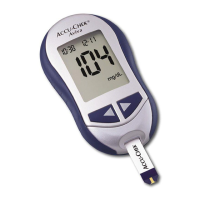
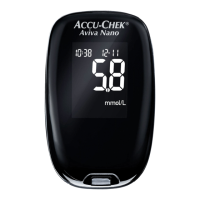
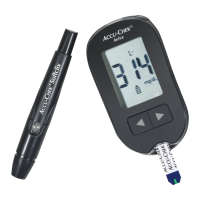
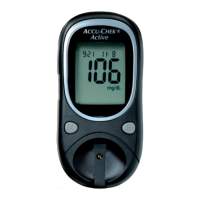
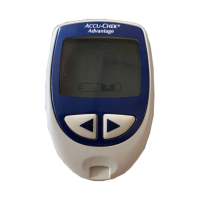
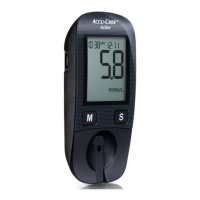
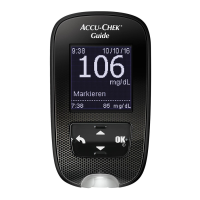
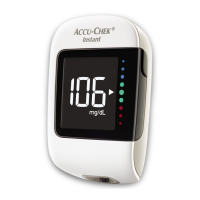
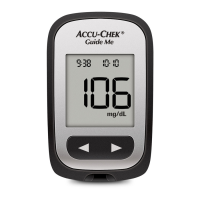
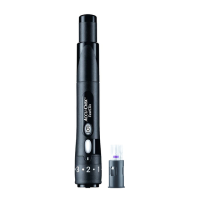
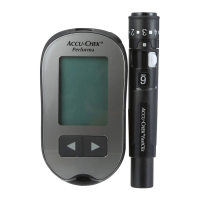
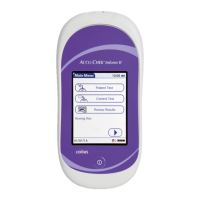
